A new start for the ‘sleeping beauty’ of the Swiss Alps
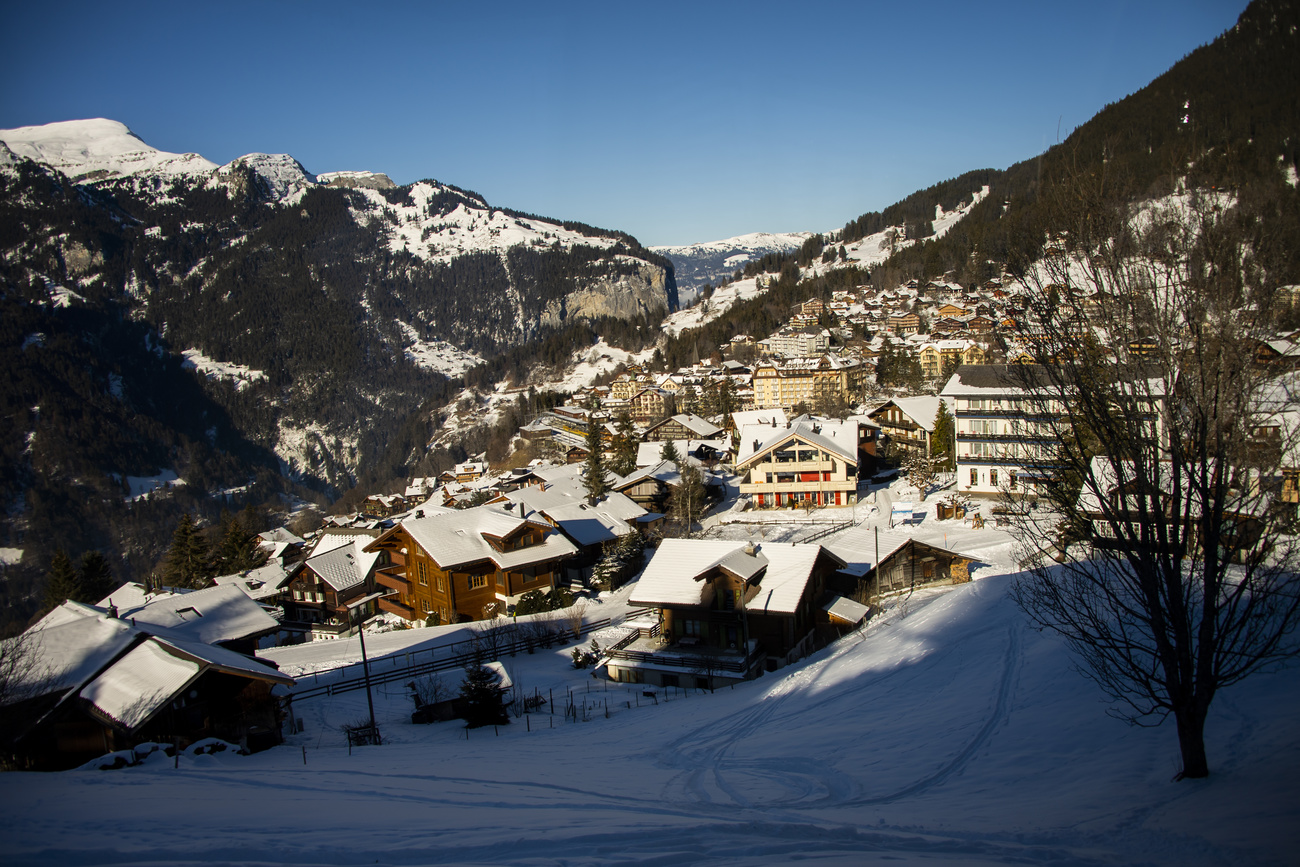
It is the most old-school of ski resorts — but does the arrival of the first five-star hotel herald big changes for little Wengen?
It’s a Thursday night in late January, and Wengen’s Downhill Only Club (DHO) is just about standing room only. There must be 70 people, many of them silver-haired, packed into the red-carpeted clubhouse with its trophy cabinets and wall-mounted wooden skis, up some steps by the railway station. Members from Wengen’s even older curling club are this evening’s guests of honour, but much of the buzz is about the upcoming celebrations of the DHO’s centenary.

This eccentric ski-racing community, now with about 1,200 members, was hastily founded in February 1925 for a race against the Kandahar Club, based in nearby Mürren. The name is a reference to the cog railway that still runs up the mountain today, which had been built in 1893 and meant that – in the days before ski lifts – Wengen’s pioneering skiers had the unusual advantage of not having to walk up before they could ski down.
I’m ushered to one of the few remaining seats for a beer with Norman Freund, a spry 94 years old and still just about skiing strong. He’s hoping his troublesome lower back might hold up to the challenge of the McMillan Cup the following week. Just one of the many races organised by the DHO, it involves everyone setting off at the same time, Wacky Races-style. “Let’s just say, I’m hopeful of winning the over-nineties category,” he notes drily.
A senior manager at IBM in a past life, Freund has been coming to Wengen every year since 1961 and has been a DHO member for 63 years. His grandchildren learnt to ski on Wengen’s gentle beginner slopes and now race with the club, just as his 50-something son and daughter did. “In many ways, not much has changed,” he says. “Maybe it’s because you have to get the train up here, but it’s held on to its spirit.”
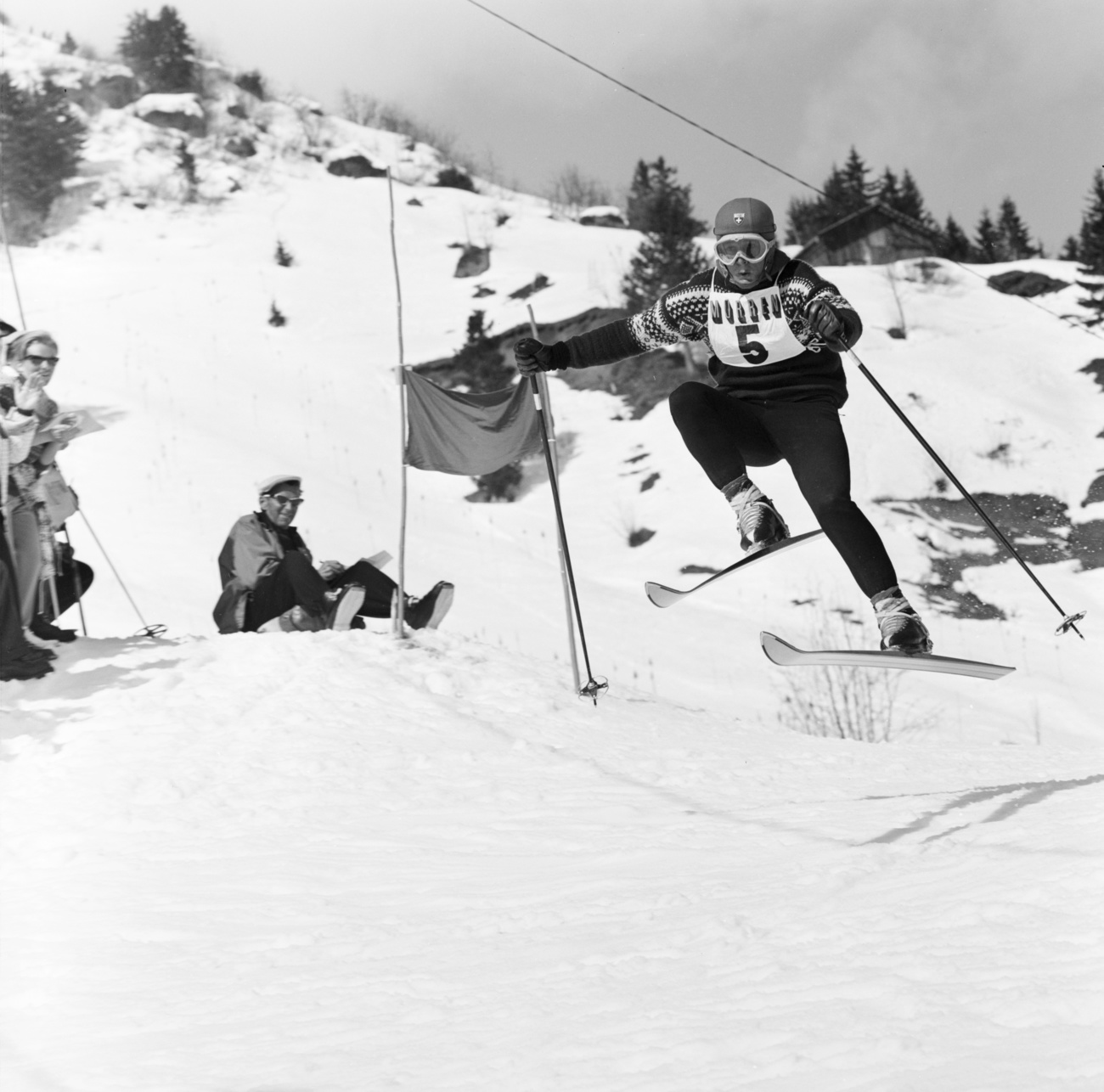
More
James Bond’s ski club celebrates 100 years of racing – and partying
The train remains central to Wengen – other than walking, it is the only way to get from Lauterbrunnen, down on the valley floor, up to the village, which sits on a sunny flank of the mountainside at 1,275 metres. Home to about 1,300 residents, it is dotted with ornate, pastel-fronted belle époque hotels, many of them peering over the steep-sided Lauterbrunnen Valley (a place said to have inspired JRR Tolkien’s Rivendell). An unassuming Alpine farming community until the arrival of the railway, it was up there with Gstaad and St Moritz among Switzerland’s most glamorous destinations in the early 20th century, before slowly being overtaken by larger and more accessible resorts.
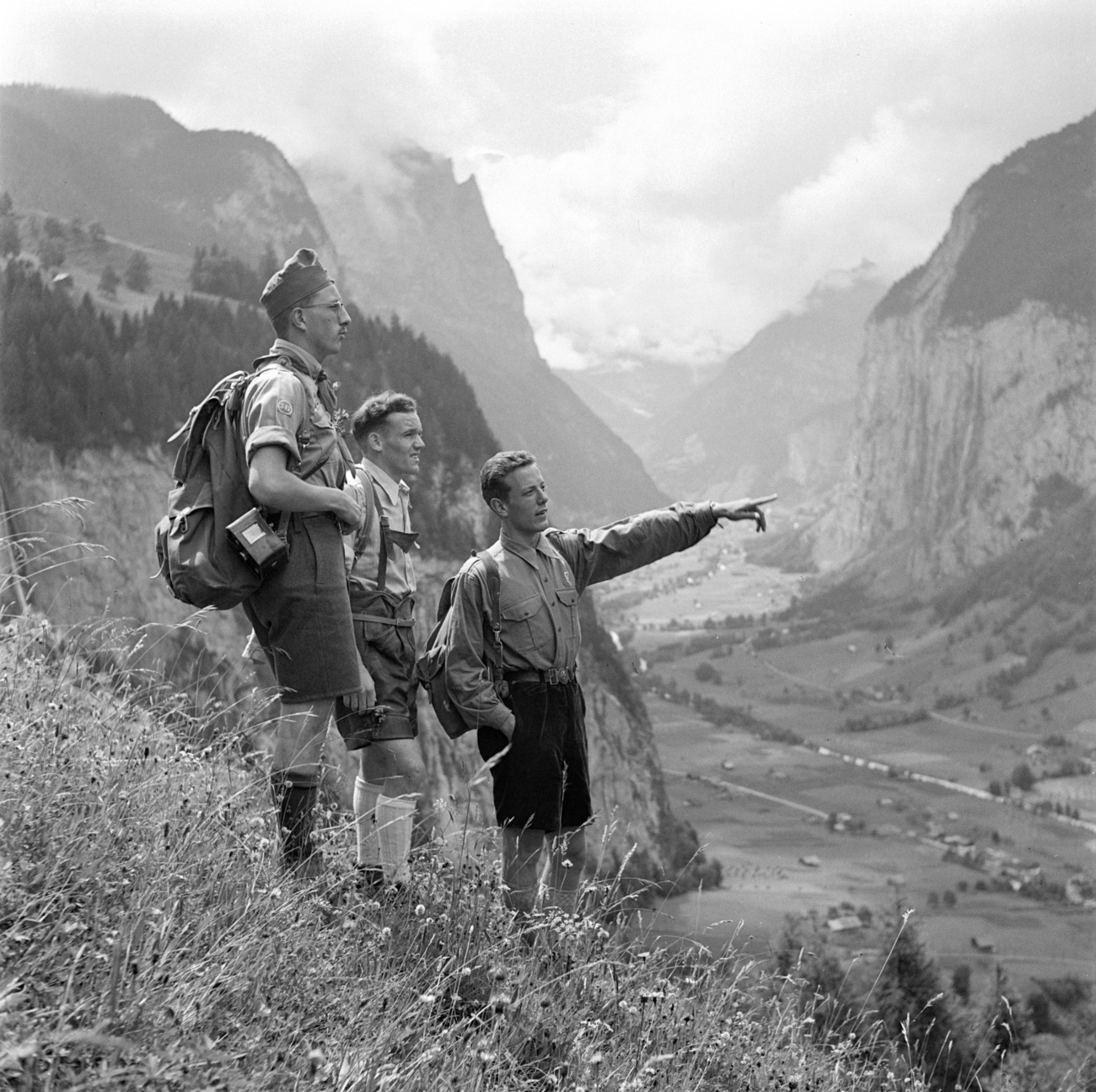
‘The rucksack of history’
With the winter sun shining the following morning, I collect my snowboard and take the little green-and-mustard Wengernalpbahn upwards on the next stage of its journey. The world’s longest continuous rack and pinion railway, it climbs to Kleine Scheidegg, a pass at 2,060 metres, before descending the far side, running all the way down to the busy tourist town of Grindelwald. A branch line, the Jungfraubahn, starts from Kleine Scheidegg and runs still higher, climbing through tunnels within the Eiger to Europe’s highest station, at the Jungfraujoch, a 3,463-metre-high saddle between the peaks of the Jungfrau and Mönch.
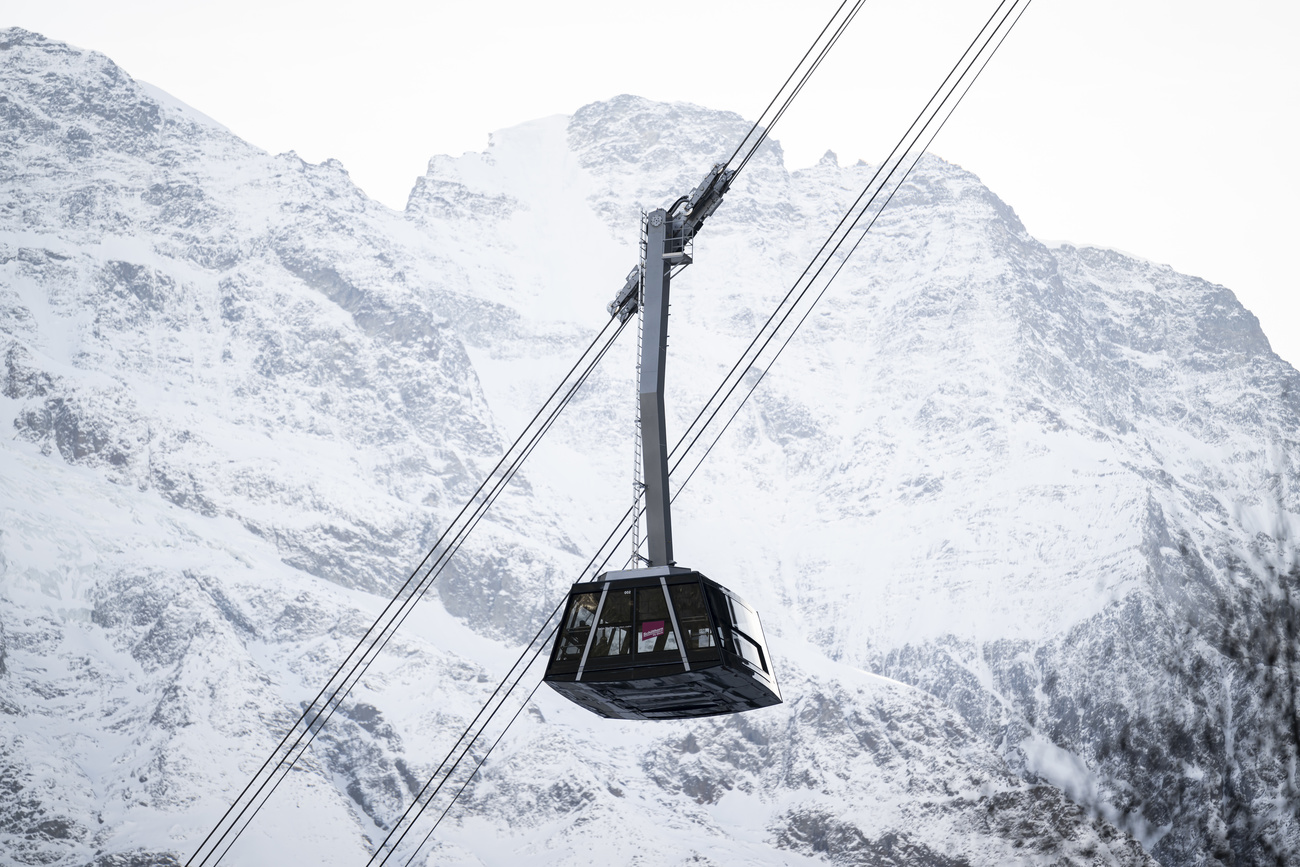
More
‘Swiss engineering at its best’: the steepest cable car in the world
I crane my neck up towards them as I get off the train at Kleine Scheidegg, the hub of a ski area offering more than 200km of pistes. From the station, it’s less than a 50-metre walk to the Lauberhorn chairlift, at the top of which there’s a choice of grin-inducing red and black runs. One passes close to the start hut of the Lauberhorn race – the oldest and still the longest World Cup downhill, which has been causing jelly-legged wipeouts in the stretch beyond Wengen since 1930.
I take a more modest route, meandering back down to Kleine Scheidegg, where I find myself outside the Bellevue des Alpes, a hotel built in 1840, with a frontage framed by the Eiger that Wes Anderson could scarcely have dreamt up. I stayed there on a previous visit and found a borderline austere place of soft jazz and creaking floorboards, where phones were discouraged as waiters in white jackets served a set menu including smoked eel and pork belly to a serious clientele in turtlenecks and jackets.
It felt happily like living in an Agatha Christie mystery, and yet the past seemed to weigh heavily, with owner Andreas von Almen describing “the rucksack of history”, having taken the place over from his aunt Heidi. As with so many Wengen hoteliers – including his brother Urs, who runs the Hotel Jungfrau Wengernalp down the hill – there was a sense of responsibility to a more romantic past, including the 1930s glory days, when there was an ice rink out front and Tatler would send a correspondent for the season.
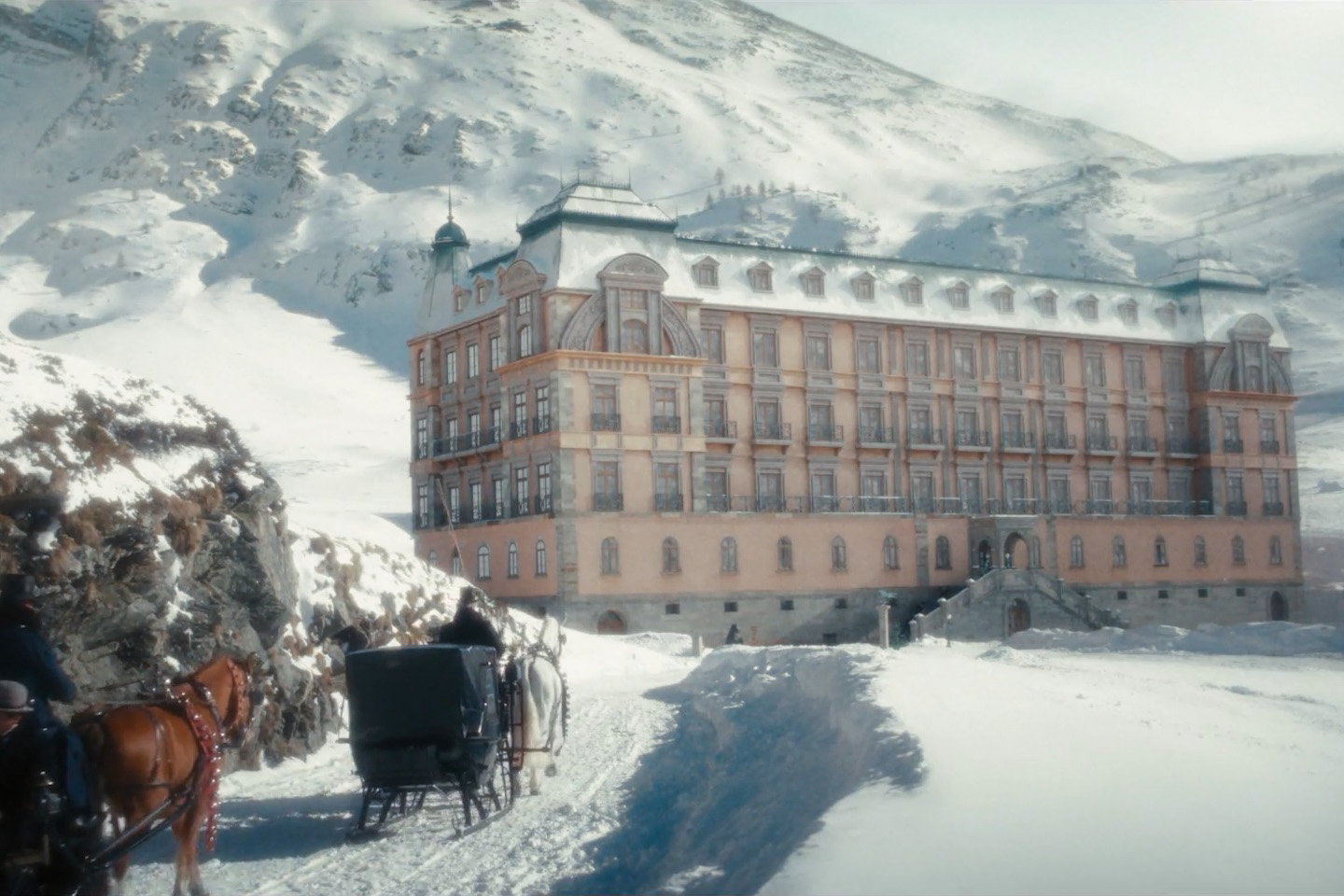
More
Don’t think small: first Swiss Netflix series, ‘Winter Palace’ sets tone of what’s to come
Change in the air
This winter, though, there is change in the air. After snowboarding down to Wengen, I arrive at the Grand Hotel Belvedere, which opened in December in a six-storey sherbet-lemon building, officially becoming the first five-star hotel in the village (others have claimed the distinction in the past, but not since the Swiss star rating system was introduced in 1979).
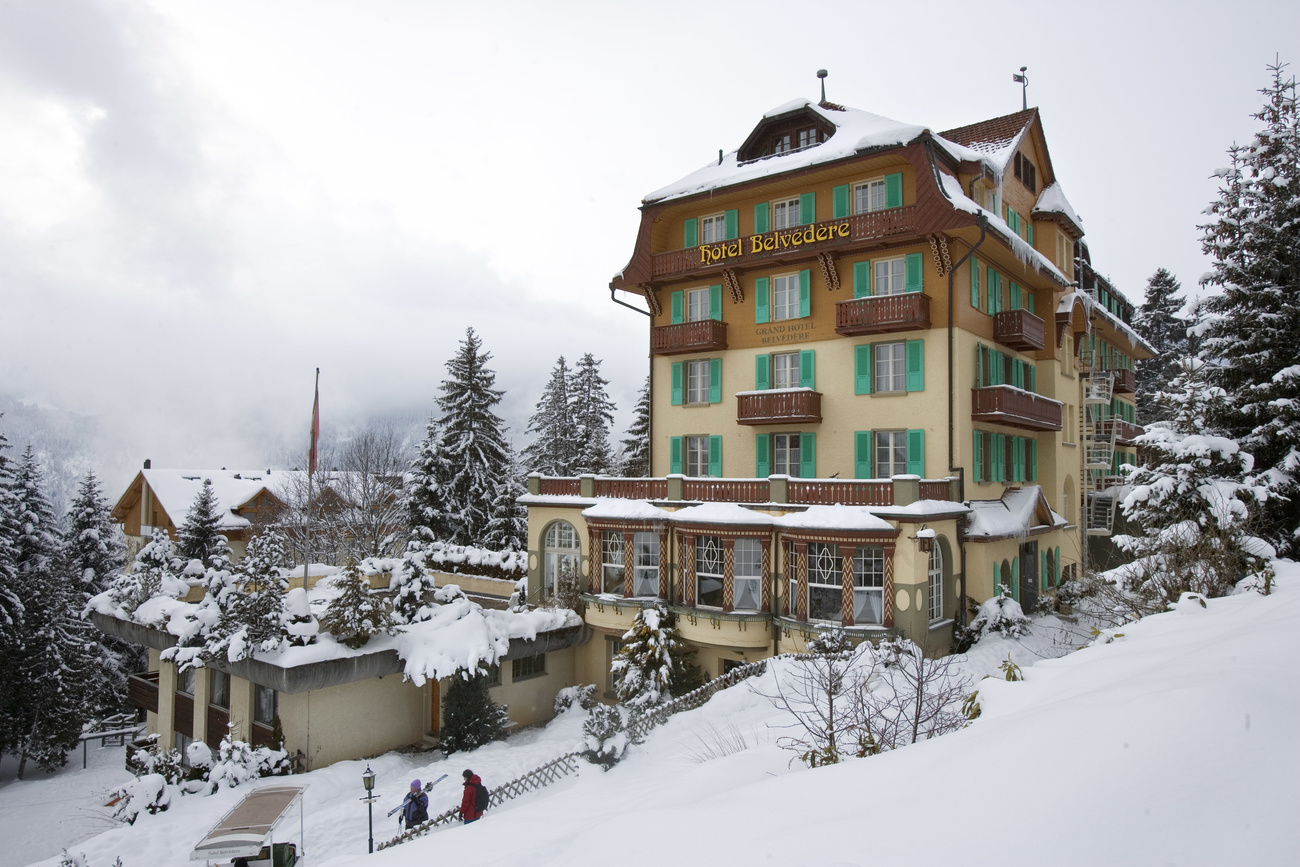
Formerly the family-run Hotel Wengener Hof, it has undergone a major renovation at the hands of Geneva design firm Complete Works – the sweeping views over the valley remain, but the patterned carpets and floral drape curtains have been replaced by crisp larch fittings, moss green upholstery and artfully mismatched black-and-white Alpine photographs. It’s owned by the ambitious French hotel group Beaumier, which has been modishly rebranding hotels across the French Alps, Ibiza, Provence and the Côte d’Azur.
In fact, the 36-room property is just the start of Beaumier’s investment in Wengen. In May, the brand will open an even more striking second section of the hotel just up the hill, with 54 rooms in the former Grand Hotel Belvedere itself – an art nouveau fairytale of a building that first opened in 1912. The team have restored the frescoes and intricately wood-carved columns of the lobby, but also added a sustainable wood pellet heating system and an adjoining minimalist concrete spa with indoor-outdoor baths, a relative rarity in the Swiss Alps. Beaumier has also bought the 70-room Hotel Silberhorn by the railway station, previously owned by the Zinnert family that operated the Belvedere and Wengener Hof, and plans to renovate in the coming years.
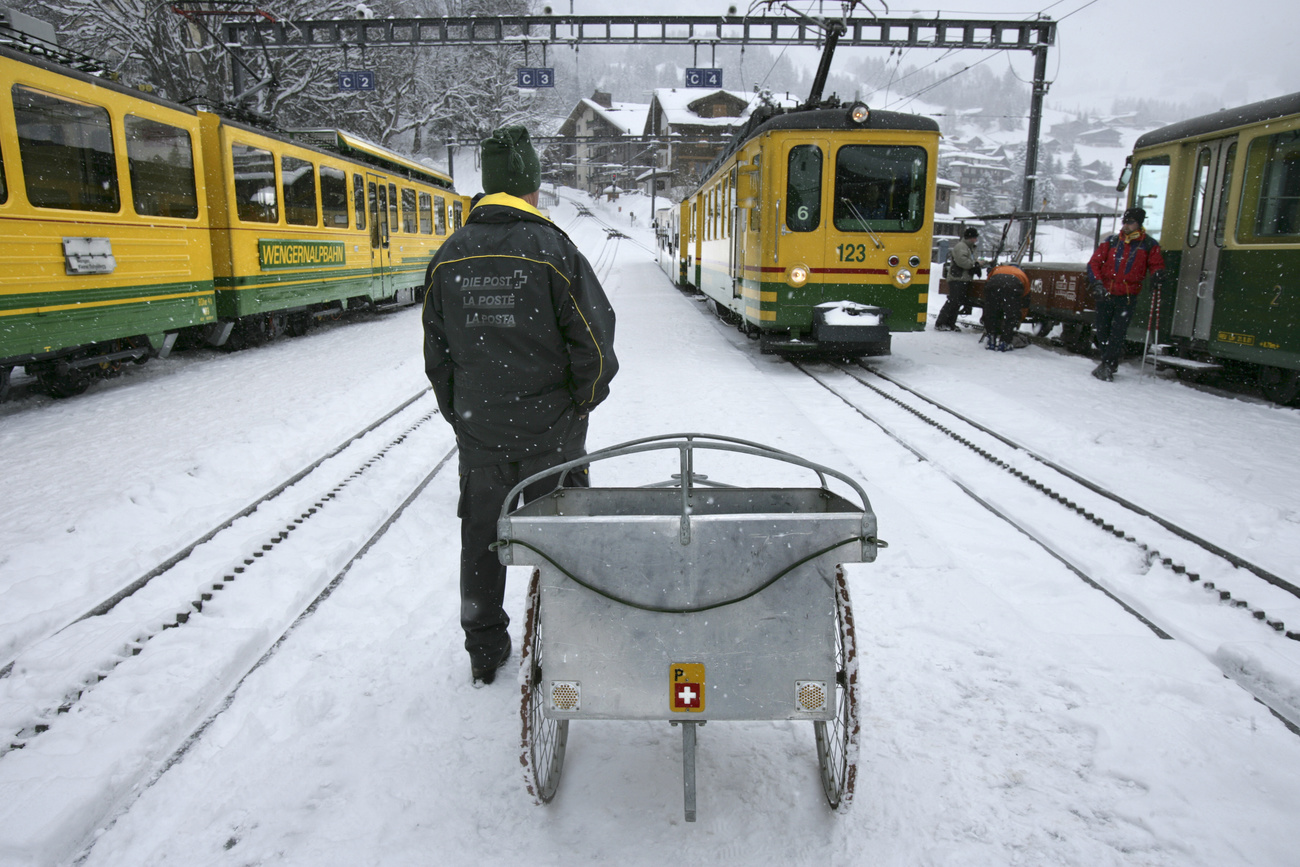
At the old Wengener Hof, I have dinner at the airy Waldrand restaurant with Lorenz Maurer, the general manager who, with his thick glasses and shoulder-length hair, has the air of a Shoreditch creative director. The white tablecloths and old chandeliers are gone, replaced by pale wood and angular, iceberg-shaped lights. “Wengen is a sleeping beauty, even to the Swiss,” says Maurer. “We respect its soul, but it was crying out for something different for a new audience.”
As if on cue, a waiter (a snowboarding former yoga teacher from the Basque country) appears with a vegan fondue made with cashew nuts, chickpea and miso, served with new potatoes, pickled onion and green pepper. Afterwards, the tattooed young chef Will Gordon explains that, while he can still do a comforting schnitzel or Black Angus burger, he wanted to reflect his own vegan leanings with dishes such as a meat-like mushroom shawarma and a moreish breaded miso aubergine dish.
Nothing on the menu is sourced from more than 100km away, with much of it foraged in the surrounding hills and forests – a rule that will also apply to the parquet-floored Brasserie Belvedere up the hill, where Swiss caviar and Bernese beef will feature on a modern fine-dining menu.
Tensions between past and future
Maurer and Gordon aren’t alone in bringing new ideas to Wengen. Next door is the powder-blue Palace hotel, an imposing 420-bed grande dame that was once owned by Club Med but has been mostly closed since 2009, leading to inevitable references to The Shining. Late last year it was finally acquired by a newly formed company, which plans to renovate and relaunch it.
A little further out, there’s a £75 million (CHF85 million) plan to build the W5 Luxury Suite Hotel, an apartment-hotel around a vast wellness area, which was recently the subject of a fiery debate among locals in the village cinema.
When I meet Wengen’s tourist chief Rolf Wegmüller, he says he’s never seen more flux in the region. While some of this might be down to a reappreciation of nostalgic design, he says that the main factor is rising demand. Especially in the summer season, which recently overtook winter for visitor numbers, marketing campaigns and influencer posts have helped sell the picture-postcard Jungfrau region, particularly to American and Asian tourists. Covid helped the Swiss to rediscover holidaying in their homeland, while a trend for “coolcations” has increased the appeal of the Alps generally.
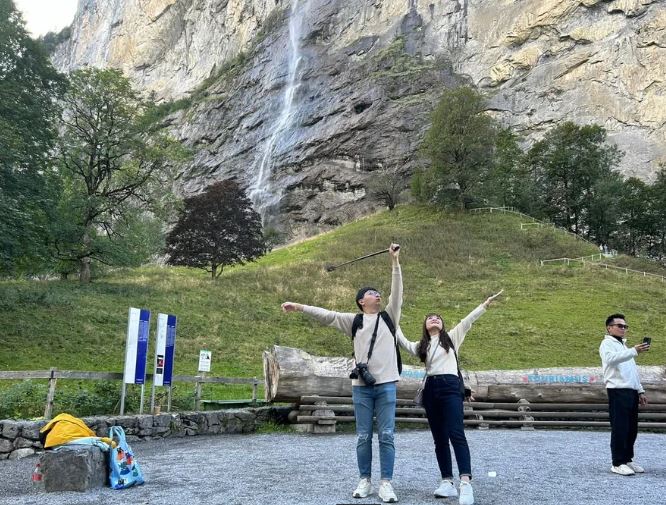
More
Mass tourism: “We feel like employees in a theme park”
“In Wengen, we’re fully booked from May to August, and almost half the visitors are now Americans, who tend to want a certain level of luxury,” says Wegmüller, contrasting them with winter’s predominantly British and Swiss visitors.
There are some obvious tensions between past and future. While the long-time hoteliers I speak to welcome the Grand Hotel Belvedere, there are local concerns that quaint, family-friendly Wengen isn’t set up to cater to more demanding guests, with its relative dearth of smart shops and nightlife. People are quick to tell me that Wengen is “not Gstaad” – meaning, as Wegmüller puts it, “if you have a fur coat and a fancy car, you leave them in the car park at Lauterbrunnen”.
The regional rise of mass tourism is a bigger problem, up there with climate change as a cause of angst. Andreas von Almen at the Bellevue des Alpes is among the local hoteliers fiercely opposed to the “selfie-and-go” tourists who take the train up to the Jungfraujoch but tend not to linger – or spend – in local hotels and restaurants.
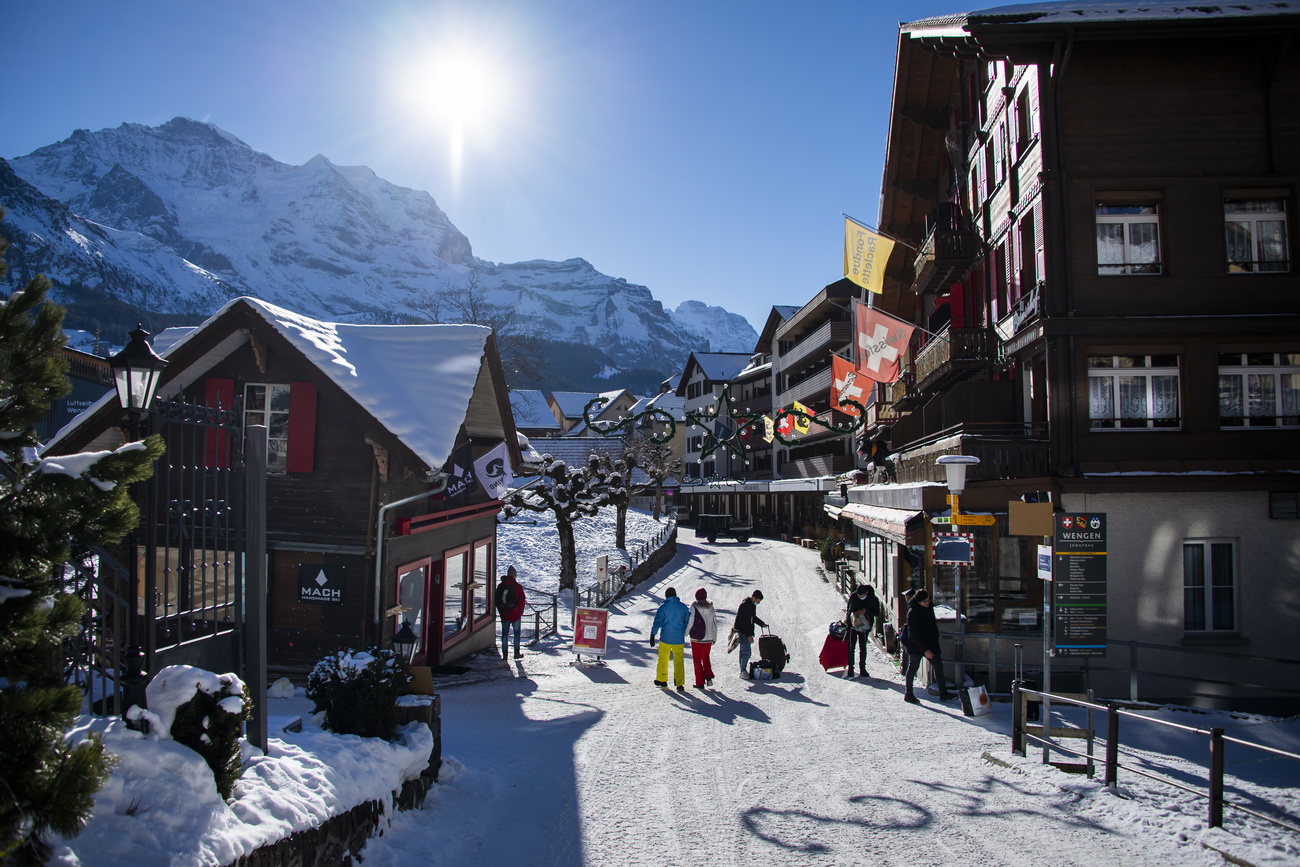
But at least in the genteel bubble of Wengen, mass tourism still feels a long way off. One evening, I’m welcomed with crisps and Twiglets to St Bernard’s, the cosy little Anglican church, built in 1927 near the nursery slopes. The chatty 77-year-old chaplain, Roger Scoones, has been coming out here for 40 years for two-week stints (he used to be the reverend at St Mary’s in Stockport) and has been a committed DHO member all that time.
At the clubhouse the night before, he’d given a tearful speech while presenting a watercolour he’d painted of the club’s former chalet headquarters. Tonight, he’s fretting about his centenary service the following Sunday, having already torn up a first draft of his sermon. “How can I cover a century of history and four decades of personal stories, make room for Jesus – and still get the members back to the bar in good time?”
I’m also anxious about doing justice to this most storied of places at a time in its history that feels tricky to define. So he helps me out with what sounds like a proverb, or maybe a prayer. “Let’s hope for some change here,” he says. “But, please God, not too much.”
Copyright The Financial Times Limited 2025

In compliance with the JTI standards
More: SWI swissinfo.ch certified by the Journalism Trust Initiative








You can find an overview of ongoing debates with our journalists here . Please join us!
If you want to start a conversation about a topic raised in this article or want to report factual errors, email us at english@swissinfo.ch.